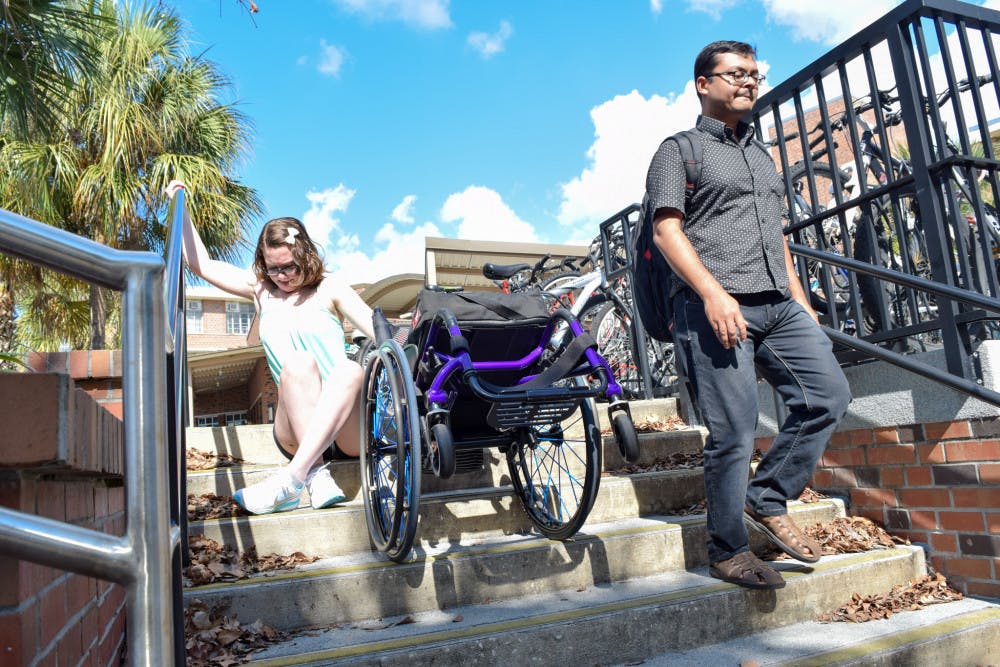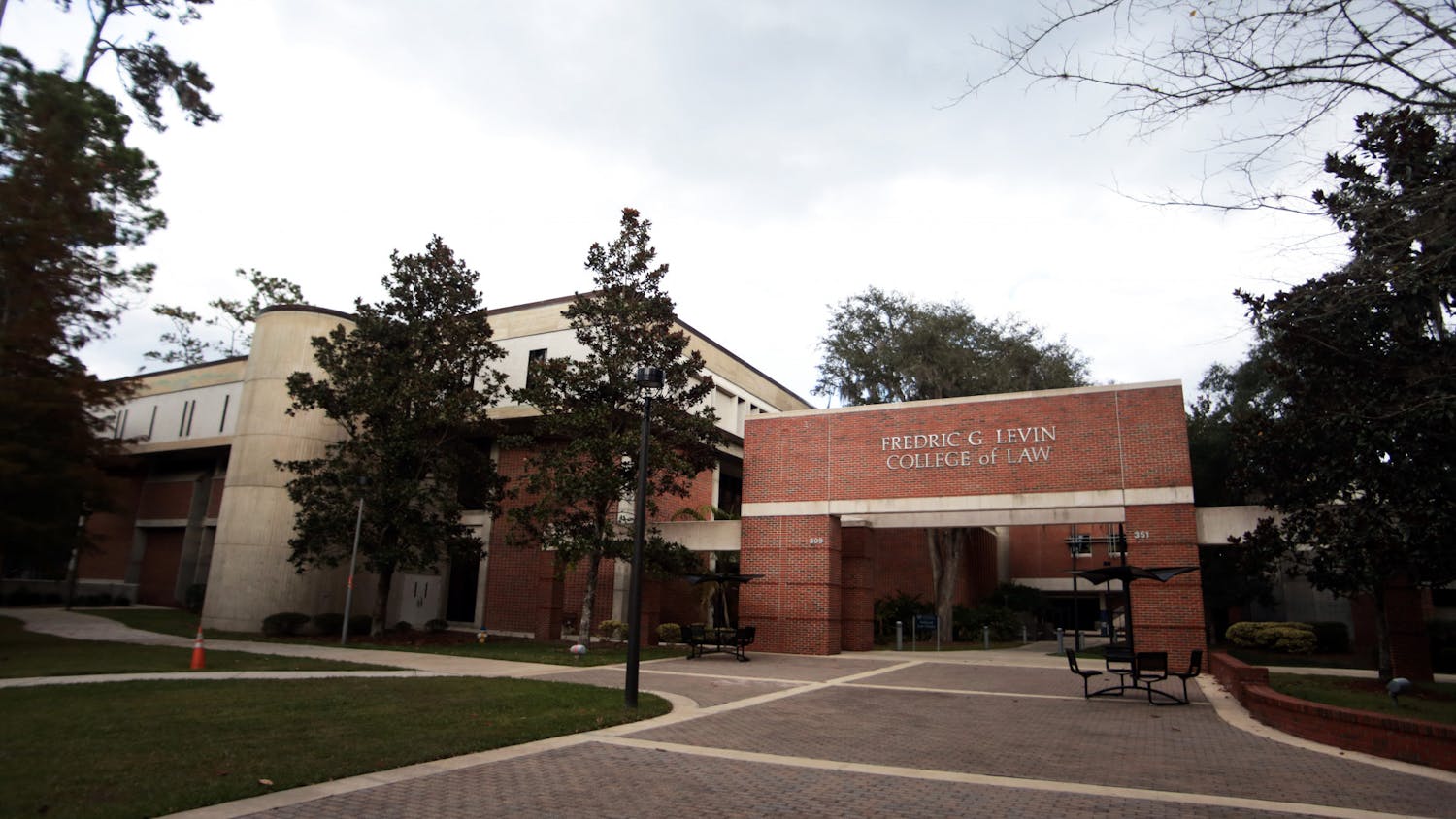Editor’s note: Though strides have been taken since the Alligator ran a two-part series in 1976 about calls for a more handicap-friendly campus, it seems there is still progress to be made.
The first week at UF was the hardest for Hailey Remigio.
Because door buttons weren’t functioning at certain buildings, the 19-year-old UF neuroscience sophomore had to call maintenance, causing her to be about 15 minutes late for class.
“After that, I talked to the Disability Resource Center about it, and they ended up being the first accessibility-related representatives that I had met on campus,” she said.
Remigio is one of the more than 1,770 students registered with the center, Paul Bernard, a promotional copywriter at UF, wrote in an email.
Of those numbers, more than 50 students — about 3 percent — have a physical disability, Bernard wrote.
Remigio said she hasn’t always been a wheelchair user. In fact, she used to be a gymnast.
However, after a rare complication from a spinal tap left her legs paralyzed in May 2014, she now relies on her wheelchair and car to maneuver around campus.
Remigio said she also has to deal with uneven cutouts where the sidewalk meets the road, causing her to sometimes splash through puddles.
Though such issues are bearable, she said, parking is often more problematic.
She said horizontal white lines indicate access aisles for handicapped parking spots, which can often be confused for the diagonal white lines designated for scooter parking.
When Remigio does park and make it to campus, she sometimes encounters a path with no ramp.
“I’ve come to so many dead ends trying to get into places with no indication that there would be no ramp,” she said.
In an Aug. 19, 1976 Alligator article, Benny Higdon, a paraplegic who started school at UF in 1975, said ramps and sidewalks were hard to find.
“The main problem is getting between buildings,” he is quoted as saying.
Even when buildings do have signs pointing toward an accessible entrance, some wheelchair users still feel excluded, said Rick Nelson, an assistant director for UF’s DRC, where he has worked for almost 30 years.
“It’s disappointing when I see brand new buildings open up and have made entrance points that exclude me as a chair user, but instead have signs pointing around the corner to a secondary entrance, which means I’m still a second-class citizen,” he said.
Nelson said he thinks the problem is the result of people’s desire to have a “grand façade entrance,” or a fear of spending too much money.
“The additional costs, if any at all, would be extremely minimal if it was originally included in the design,” he said.
As part of her Ms. Wheelchair Florida Takes Flight Campaign, former Gator Heather Taylor visited Cypress Hall on July 19.
The residential hall was designed with features such as automatic doors and lowered lockers, and it houses the DRC.
“I think there are six places in the entire nation that are like this,” Taylor said.
Kenneth Osfield, a compliance officer for UF’s Americans with Disabilities Act Compliance Office, said his office received $400,000 from the university to upgrade campus facilities this year.
State funding was an issue in the ’70s, according to Alligator archives, and a $300,000 request for building improvements was denied.
An Aug. 17, 1976, Alligator article listed narrow bathroom stalls as an issue, but Osfield said most of his office’s money now goes toward bathroom improvements.
Remigio, who will soon navigate her second year of college (and lots of ramps), said she would like UF to hold an event that puts people in her wheels for a day.
“I cannot expect the world to be understanding and inclusive of persons with disabilities if I’m not willing to do the educating portion,” she said.
Hailey Remigio, a 19-year-old UF neuroscience sophomore, attempts to get down a set of stairs outside Rawlings Hall. “No one actually stopped and gave me a second look,” she said. “It wasn’t the slightest bit of a challenge for every passerby, but to me and other persons with disabilities, it was nearly impossible. And until you look through our eyes, you just won’t see it, not because you’re ignorant but because no one had shed light on it before.”






